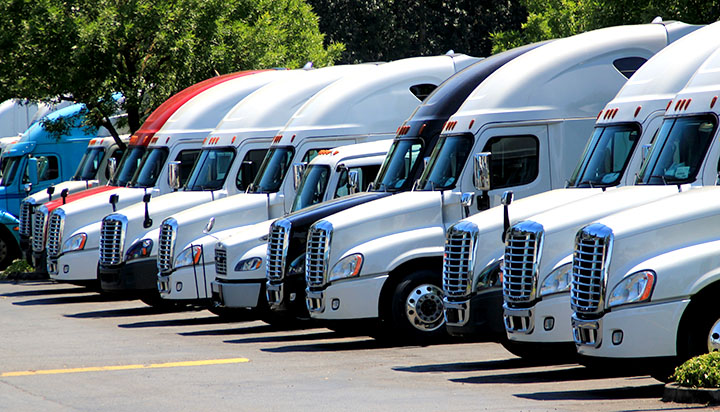June U.S. sales of new Class 8 trucks rose 42.7% over dismal May sales figures but didn’t come close to matching June 2019 numbers. According to ACT Research, 13,567 Class 8 trucks were sold on the U.S. market in June, far behind (43.2%) the 23,900 sold in June 2019.
Kenny Vieth, ACT Research’s president and senior analyst, credits the increase to production levels.
“April, with only 2,504 trucks built, was the lowest production month since we started keeping records in 1979,” he told The Trucker.
That number represents trucks built throughout North America, not just in the U.S. Manufacturing closures and slowdowns, including those that occurred at plants that supply parts to truck builders, played a large role in the low April production. May saw production increases to 6,791 trucks, before leaping to 19,167 trucks built in June, a 182% increase.
“The increased production suggests that the supply chain has mostly gotten the bugs worked out,” Vieth said.
Of the 13,567 Class 8 trucks sold in June in the U.S., 4,659 — or 34.6% — were destined for the vocational market in applications such as dump, trash or other non-fifth-wheel uses. That’s far ahead of the 2019 average, when 26.9% of new Class 8 trucks went to vocational purposes.
As with the lower sales numbers, COVID-19 plays a role in the higher percentage of vocational trucks. While much of the country shut down, work for vocational trucks remained steady and, in some cases, increased. Road construction, for example, benefited from in inflow of stimulus dollars.
Many of the Class 8 trucks destined for over-the-road (OTR) use were sold to fulfill orders already on the books. Carriers that are replacing fleet vehicles are finding trade prices to be advantageous.
“Late-model tractor prices are holding up very nicely. If a carrier is replacing trucks and trading in models that are three years old, they’ll find favorable trade values,” Vieth explained.
Regarding the used Class 8 market, ACT’s State of the Industry: U.S. Classes 3-8 Used Trucks report showed used truck sales climbing 54% in June over May numbers. Compared to June 2019, sales rose 6%.
For the year to date, the average used truck price was down 13% compared to the first six months of last year. The odometer reading of the average used truck sold was down 3%, and tractor age also dropped, by 8%.
Vieth was quick to point out that late-model trucks are selling faster than older models.
“If you look at a three-year old truck, it has ADAS (advanced driver-assistance systems) and it gets great fuel mileage,” he said. “Used truck prices for late-models are still very high, but when you go back seven or eight years, nobody wants those models.”
Truck sales, of course, follow economic trends, and what lies ahead for 2020 is still dependent on the effects of COVID-19. As of this writing, individual states had begun to reopen their economies, but spikes in infection rates and COVID-related deaths have caused many officials to reconsider the wisdom of returning to “normal” just yet, and some states are reimposing restrictions.
“Right now, we’re seeing a lot of cutbacks as numerous states are tightening up due to the resurgence of COVID-19,” Vieth said.
Perhaps Lael Brainard said it best.
“The pace of improvement may slow if a large portion of the easiest gains from the lifting of mandated closures and easing of capacity constraints has already occurred. Moreover, weekly COVID case counts have been rising, and some states are ramping up restrictions,” the Federal Reserve Board of Governors member said when addressing a mid-July virtual meeting of the National Association of Business Economists.
“Rolling flare-ups or a broad second wave of the virus may lead to widespread social distancing — whether mandatory or voluntary — which could weigh on the pace of the recovery and could even presage a second dip in activity,” Brainard concluded.
In short, just as the economy began to recover, actions to combat the increased numbers of COVID-19 victims could slow, or even reverse the current recovery.
Cliff Abbott is an experienced commercial vehicle driver and owner-operator who still holds a CDL in his home state of Alabama. In nearly 40 years in trucking, he’s been an instructor and trainer and has managed safety and recruiting operations for several carriers. Having never lost his love of the road, Cliff has written a book and hundreds of songs and has been writing for The Trucker for more than a decade.








